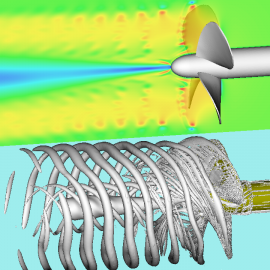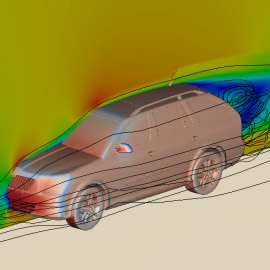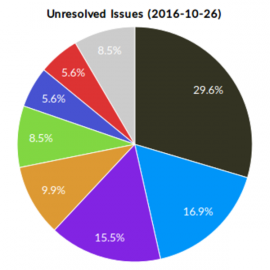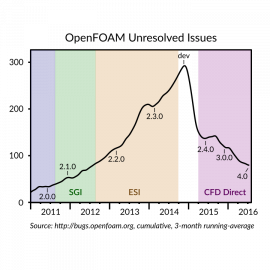In Year 2, CFD Direct delivered 55 days of OpenFOAM Training with its 3 × 2 day courses, Essential CFD, Applied CFD and Programming CFD. Training was delivered as: scheduled Classroom Training in London, Berlin, Munich, Houston, Chicago and Beijing; live Virtual Training; and, customer On-Site Training. We launched our Programming CFD course, containing modules in C++ programming applied to popular examples in OpenFOAM. We successfully ran live Virtual Training courses with participants from a wide geographical area. And we updated Training for OpenFOAM v4, that included our changes to make OpenFOAM easier to use.
CFD Direct Year 2: Cloud

In Year 2, CFD Direct updated its OpenFOAM cloud computing platform — CFD Direct From the Cloud (CFDDFC) — to OpenFOAM 4.1, running on Ubuntu 16.04. Feedback from users was very positive, including a 5-star rating on the CFDDFC Marketplace Product page at at Amazon Web Services (AWS). We became an Advanced Technology Partner of AWS, and produced a case study on the cost of CFD on AWS EC2 that concluded, in particular, that the cost of Spot instances was approximately 40% of the total cost of ownership of on-premises hardware. We made CFDDFC available on AWS X1 instance types, running simulations on 32 and 64 physical cores in a single instance.
OpenFOAM Maintenance

OpenFOAM is free, open source software in computational fluid dynamics for real-world engineering and scientific applications. CFD Direct is committed to maintain OpenFOAM, demonstrated by the thousands of code commits to OpenFOAM-dev, with support from contributors. Maintenance concerns the evolution of software in response to changes in user expectation and environment. We have introduced an agile strategy suitable to the feedback process of software evolution and have identified key areas of OpenFOAM that requiring significant redesign, e.g. AMI and particles.
Cost of CFD in the Cloud

Cloud computing replaces large upfront expenses with low, variable payments that only apply to what you use. CFD simulations cover a range of sizes and complexity. Activity is generally interrupted by quiet periods when simulations are halted, e.g. when a simulation ends non-working hours, during analysis of results or preparation of a new simulation, etc. The fluctuating demand makes CFD well suited to a pay-per-use model. Users need to understand the costs involved to get the best value from cloud and be confident that they fall within budget. This article explains the costs, with an example of an external aerodynamics calculation with OpenFOAM using CFD Direct From the Cloud™ (CFDDFC) on Amazon Web Services (AWS).
Issues with OpenFOAM, Pt. 3

A breakdown of outstanding issues in OpenFOAM (2016-10-26) shows 90% of unresolved issues falling within only 7 categories. The two worst offenders account for almost half of all unresolved issues: 1) AMI, ACMI and cyclic interfaces; and, 2) heat transfer, including conjugate heat transfer (CHT). These categories, and “particles and tracking” and “sources/constraints” in particular, require significant refactoring and/or rewriting. Their current state of disrepair was caused by poor funding under a roadmap development strategy. Funding of agile development of OpenFOAM is now needed to support our aim to improve quality, with a target 50% reduction in unresolved issues in 2017.
Issues with OpenFOAM, Pt. 2

Agile development of OpenFOAM emerged following the public distribution of the development line in December 2014. It relies on user participation, which is encouraged by rewarding users for reporting issues with timely resolution. OpenFOAM was in poor health at version 2.3.0, with unresolved issues increasing rapidly and long resolution times. Following the move to agile development, unresolved issues are reduced and under control, with ~70% of issues resolved in 1 day and ~90% resolved in 1 week, taking OpenFOAM to a new level of quality and maturity (always releasable) by version 4.0.

